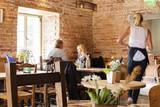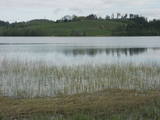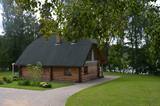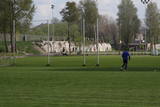| Nr | Nosaukums | Apraksts |
|---|---|---|
|
Pirts zeme ir kā atsevišķs ciemats, kur uz savas ādas varēsiet izbaudīt dažādas pirtis un to savdabību. Brīnišķīga iespēja novērtēt katras pirts garu un krāt zināšanas par to vēsturi. |
||
|
Pa senajiem tirdzniecības ceļiem ieplūda ne tikai preces, bet arī zināšanas un kultūra. Gaismas ceļš saistās ar mācītāju Ernstu Gliku, literātu, bībeles tulkotāju un latviešu bērnu skolu dibinātāju, hernhūtiešiem, Kārli Skalbi, brāļiem Kaudzītēm, Jāni Poruku, Antonu Austriņu un viņu garīgo mantojumu. Vidzemē cep gardu rudzu, miežu, kviešu, arī speltas kviešu un griķu maizi. Mīklai pievieno dažādu sēklu maisījumu, ķimenes, riekstus, arī žāvētus augļus un kaņepju sēklas. No kaņepēm gatavo tradicionālo staku, eļļu, pikas kopā ar pelēkajiem zirņiem, tās pievieno gotiņu konfektēs un pat šokolādē. Kviešu miltus senāk lietoja tikai svētkos, dažviet piedāvā mācīties no tiem cept ūdenskliņģerus ar sāli un ķimenēm. Graudu ceļam var izsekot zemnieku saimniecībās un atjaunotās vējdzirnavās. Bez tradicionālā Jāņu siera nogaršojiet Zaļo sieru un gardos kazas sierus. Vietējais lepnums ir Burtnieku ezera zandarts, tepat augušās foreles, sami un stores, sezonā dažviet vēži. Iecienīti ir vietējo mājlopu vai mājputnu ēdieni, arī no truša gaļas. Muižu virtuves piedāvā medījumus un fazānu ar meža veltēm un savvaļas garšaugiem. Vidzemē var sastapt Ķiploku karalienes un saimnieci, kas gatavo augu pulverus. Nobaudiet arī pīrāgus, plātsmaizes, medus kūkas, saldēdienus no putota biezpiena, pīlādžiem, cidonijām, āboliem, salda krējuma un rudzu maizes, melleņu vai ābolu klimpas. Slāpes veldzēs zāļu tējas ar medu, bērzu sulas, ogu limonādes vai stiprāki dzērieni – gards alus un vīns. |
||
|
Atrodas Labraga – Apriķu ceļa malā. Kāds nostāsts vēsta, ka to 1896. gadā cēlis vietējais muižkungs, kurš vēlējies, lai viņa meitas laulības notiktu baznīcā. Dievnamā atrodas altārglezna "Kristus pie krusta un Sv. Marija Magdalēna", kas gleznota 19. gadsimtā (autors T. Šprengels). |
||
|
Iepretim Marijas salai (Pilssalai) paceļas ap 30 m augstais un stāvais (nogāzes mākslīgi nostāvinātas) Tempļa kalns - ar sānu gravām norobežots sens latgaļu pilskalns. Ap 80 m garajā un līdz 40 m platajā pilskalnā izšķirami vairāki mākslīgi veidoti vaļņi. Viena no senākajām Tempļa kalna apkaimes apdzīvotības liecībām ir atrastais cirvis, kas datēts ar 2. – 3. gadu tūkstoša miju pr. Kristus. Arheologi uzskata, ka šajā laikā cilvēki dzīvojuši Pilssalā. 10. – 11. gs. pilskalnā atradusies latgaļu pils, kuru 1225. g. nopostīja krustneši. Pilskalna virsma ir pārveidota arī salīdzinoši nesenā laikā - 1807. g. - granīta rotondas būvniecības laikā. Rotonda celta, godinot krievu feldmaršalu Šeremetjevu un zviedru kapteini Vulfu. Skats no Tempļa kalna uz Alūksnes ezeru un pilsētu ir viens no skaistākajiem Vidzemē. Ievērības cienīgs ir 1937. g. celtais Saules tilts. No Tempļa kalna ir vērts aiziet līdz netālu esošajam 37,8 m augstajam koka skatu tornim. Asāku izjūtu cienītājiem tiek piedāvāts gaisa trošu nobrauciens “Zzzippp” pāri Alūksnes ezeram. |
||
|
Restorāns piedāvā plašu klāstu ar gardiem un veselīgiem ēdieniem no dažādām valstīm, kā arī plašu dzērienu izvēli, svaigi ceptus cepumus, trifeles, kūkas un sēklu maizes, kas ir pieejamas pusdienu un vakariņu maltītēs. Nedēļas nogalē pieejams speciāls dienas piedāvājums, un iespēja organizēt dažādu veidu pasākumus, kas iekļauj ēdināšanu. Pieejama bērnu ēdienkarte, kā arī bērnu spēļu istaba un laukums, kas atrodas blakus dzirnavām. |
||
|
This tour will take you exploring the peculiar island of Rusnė and the delta of the river Nemunas in Lithuania. The island of Rusnė in the Nemunas Delta Regional Park is enclosed by waters of the river Nemunas and its tributaries. It is a resting place for migratory birds and home to a cormorant colony. The area of the island is 45 km2 and it is connected to the mainland by a bridge. The island of Rusnė is the lowest place in Lithuania, lying below sea level. The historic centre of the town Rusnė is characteristic of authentic wooden architecture, buildings painted in bright colours, colourful window shutters and decorations. The Baltic Coastal Hiking Route leads through the small town of Šilutė, revealing architecture that was once common to East Prussia. From Šilutė to Kintai, the Baltic Coastal Hiking Route runs along a low plain. To protect this area from flood waters of Nemunas, there is a system of dams, polders and canals established. After crossing the river Minija, the route invites you to visit the ethnographic village of Minija. Here you can enjoy the lowland landscape of the seaside region with vast wetlands and ponds. |
||
|
Ungru Resto ir piejūras restorāns Hījumā ziemeļu krastā, kur atmosfēru rada kādreizējā muitas māja, Suursadamas vide, kvalitātīvs ēdiens un apkalpošana. Ēdienkartē tiek izmantotas vietējie produkti un tiek gatavoti tradicionālie Hījumā salas ēdieni, pasniegti mūsdienīgā stilā. Restorāns Ungru Resto - iesaka White Guide 2018. |
||
|
Dabas parks veidots Burzavas pauguraines, Adamovas ezera (eitrofs ezers) un tā krastos sastopamo biotopu un sugu, t.sk. sikspārņu aizsardzībai. Visskaistākie skati uz dabas parku paveras no pauguriem, kas atrodas ezera ziemeļu krastā. Ezera krastos atpūtu piedāvā vairākas naktsmītnes, bet parka tuvākajā apkārtnē tūristus uzņem populāri Latgales novada podnieki. |
||
|
Brīvdienu māja atrodas Veclaicenes centrā, Kornetos, Ievas ezera tuvumā, 30 m no ezera krasta. Brīvdienu mājas 1.stāvā- atpūtas telpa ar kamīnu un stiklotu verandu, pirts (50,00 EUR/vakars), neliela virtuvīte, tualete. Ārpusē-neliela terase ar skatu uz ezeru. 2.stāvā ir 2 izolētas istabas un 10 gultas vietas. Pie ezera – ugunskura vieta, iekopta peldvieta ar laipu. Iespējama laivas, katamarānu īre. |
||
|
Celta 1835. g. kā baronu fon Firksu dzimtas īpašums pēc baroneses Teas fon Firksas pasūtījuma. 1883. g. pēc pārbūves ēka ieguva greznu manierisma un renesanses formu dekoratīvo apdari un lielāku būvapjomu. 1905. g. 15. decembrī muižas ēku nodedzināja revolucionāri. Atjaunošanas darbi arhitekta L. Reinīra vadībā tika uzsākti trīs gadus vēlāk. Muižas pilī apskatāma Svētku zāle ar diviem marmora kamīniem, atsevišķās telpās - 20. gs. sākumā liktais parkets un ārdurvju vērtnes ar metālkalumiem. 1938. g. pili pārbūvē. 2. pasaules kara laikā ēkā atrodas vācu armijas karavīru hospitālis, pēckara gados – mežu darbinieku skola. No 1962. g. pilī izvieto Rudbāržu skolu, kas nosaukta Oskara Kalpaka vārdā. Pie ēkas novietota piemiņas plāksne, kas veltīta Kalpaka bataljona gaitām. Latvijas Brīvības cīņu laikā 1919. g. 22. janvārī lielinieki bija ieņēmuši Skrundu. Septiņas dienas vēlāk O. Kalpaka bataljons no Rudbāržu muižas devās Skrundas virzienā. Pēc trīs stundu ilgas cīņas tas guva uzvaru, ieņemot stratēģisko līniju Ventas krasta tuvumā. Šī bija kalpakiešu pirmā uzvara pēc daudzkārtējas atkāpšanās, kas tiem deva iedvesmu turpmākajās cīņās. Rudbāržu muižas Varoņu zāle, kas stāsta par nozīmīgiem posmiem Latvijas Brīvības cīņās, restaurēta 2016. gadā. |
||
|
Ejot Saulrieta taku, mūs sagaida Saulkrastu jūrmalai raksturīgā ainava – plaša, smilšaina pludmale un priekškāpas, Pēterupe ar Saules tiltiņu un dižpriedes kāpu mežā. Takas posmā pie Inčupes grīvas aplūkojama Baltā kāpa – viena no Saulkrastu raksturīgākajām vietām. Tās baltais, 18 m augstais smilšu atsegums senatnē kalpojis kā orientieris vietējiem zvejniekiem. Lielās vētrās kāpa tikusi noskalota, to postījuši arī kāpas apmeklētāji, izbradājot stāvo nogāzi, tāpēc kāpas nostiprināšanai un aizsardzībai izveidoti pinumi. Kāpa apaugusi ar vecu priežu mežu. No kāpas paveras skaists skats uz jūru, Inčupes grīvu un plašo pludmali. Atgūt spēkus iespējams gan pie jūras, gan iekārtotajās atpūtas vietās. Lai saglabātu un nodrošinātu kāpas apskati, izveidota laipu taka ar skatu platformu. Takas garums ~ 3,6 km, apskatei nepieciešamais laiks – 1 – 2 h. Sniegotās ziemās Baltās kāpas apkārtnē ir izveidota distanču slēpošanas trase. |
||
|
Neliela daļa no iespaidīgās Liepājas fortifikācijas sistēmas, kas apjož pilsētas perimetru un tās piekrasti. Atrodas pie stadiona „Olimpija”. Skatīt. arī objektus nr. 30077, 30078, 30079, 30080, 30098.
|
||
|
Aiz Jodkrantes (Nidas virziens) ceļa labajā pusē ir izveidots autostāvlaukums un labiekārtota vieta, no kuras apskatāma Lietuvas (atrodamas ziņas, ka arī Eiropas) lielākā zivju gārņu Ardea cinerea un jūras kraukļu Phalacrocorax carbo kolonija, kur kopā varētu būt ~ 3000 putnu. Neaizmirstiet līdzi paņemt tālskati! |
||
|
Hāpsala kādzreiz bija aristokrātu iecienīta vieta, viņi mēdza šeit uzturēties vasaras laikā. Mūsdienās apmeklētājus vilina pilsētas šarms - mazās ieliņas, vecās koka ēkas un skaistā promenāde. Viens no iemesliem, kādēļ Hāpsala bija tik populāra kādreiz, bija SPA plašie piedāvājumi un iespējas, kas ir aktuāli arī mūsdienās. Interesants fakts: slavenajam komponistam Čaikovskim šī vieta bija viena no mīļākajām, kur pavadīt brīvdienas. |
||
|
Kempings, pirts jūras krastā, piknika vietas, atpūta romantiskā namiņā kokā un nakšņošana teltīs, nojumes īre, vietas īre pasākumiem brīvā dabā. |
||
|
Lai Daugavu iepazītu no cita skatu punkta, no „Liepkalnu maiznīcas” var doties izbraukumā ar vikingu liellaivu „Lāčplēsis”, kas vienlaicīgi var uzņemt 24 cilvēku lielu grupu. Daugava jau izsenis ir bijusi nozīmīgs pārvietošanās koridors ne tikai daudzām augu un dzīvnieku sugām, kas pa to „ienāca” tagadējā Latvijas teritorijā, bet arī cilvēkiem un ciltīm, kas dzīvoja Daugavas un Baltijas jūras krastos. |
||
|
Pirms dodamies tālāk – Skaistkalnes virzienā, var izmest nelielu loku līdz Lejeniekiem, kas atrodas skaistā vietā – Mēmeles kreisajā krastā, 6 km austrumos no Bauskas. Latviešu dzejnieka Viļa Plūdoņa (1874. – 1940.) memoriālais muzejs dibināts 1968. g. viņa dzimtajās mājās „Lejeniekos”. Zemgales daba un vecmātes stāsti būtiski ietekmēja nākamā dzejnieka daiļradi. Šeit nokļuvušie var apskatīt ratu un etnogrāfisko priekšmetu kolekciju, izstaigāt Plūdoņa taku vai apmeklēt dzejnieka un viņa radinieku atdusas vietu netālu esošajos kapos. Bērniem noteikti jāiegriežas “Zaķīšu pirtiņā”. |
||
|
The road trip from Vilnius to Rīga will take you to the most beautiful and important sightseeing places of the Next on the route is the Dubysa Regional Park, which includes the spectacular Dubysa river valley, historic churches and mounds along its banks. Be prepared, since the terrain of this area is rather rolling. Next, you will visit the town of Šiluva, which is a Catholic pilgrimage site, and then travel to the Tytuvėnai Regional Park, where you walk the natural trail of the lake of Gilius, which is part of the Forest Trail. The tour will continue in the Kurtuvėnai Regional Park, where you will walk one section of the Forest Trail from Kurtuvėnai to Šaukėnai, leading along small forest trails, educational trails, beautiful tree alleys and through wetlands. Then you will go to the region of Samogitia, visiting Telšiai and walk one of the Forest Trail sections along Lake Plateliai. Next, the tour takes you through the stone town of Mosėdis to Latvia, where you will stop over to have a walk on one of the oldest towns in Latvia – Aizpute, enjoying its 19th century wooden architecture and the local wine brewery. Next you will take a small walk along the Forest Trail in the eye-catching Kazdanga manor park and drive on to the most beautiful town of Kurzeme – Kuldīga. At the end of the tour, you will walk a section of the Forest Trail along the Abava River Valley Nature Park and nature trails in the Ķemeri National Park. |
||
|
Kafejnīca atrodas viesu namā „Pils” pie Kandavas Bruņinieku pilskalna un Pulvertorņa, uz kuriem paveras skats no vasaras terases. Latviešu virtuve: Zirņu biezzupa, mājas frikadeļu zupa, baraviku krēmzupa, aukstā biešu zupa, cepta cūkgaļa, mājas kotletes, pildīta bute, kartupeļu pankūkas, rupjmaizes kārtojums. |
||
|
Latvijas un domājams, - Baltijas resnākais baltais vītols (Salix alba). Daudzi no tā varenajiem žuburiem guļ jau zemē, atlikušie ir sašķēlusi milzu monolīto stumbru. Blakus novietots neliels informācijas stends. Līdz ozolam var nokļūt pa taku, kas sākas pie Raganu klintīm.
|
||



























